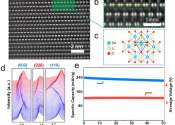Using sodium to make more sustainable batteries
The element lithium is used widely in batteries because it results in long-lasting, stable energy storage. However, it's a finite resource, so researchers are hard at work trying to identify alternate materials to use in ...
Jul 11, 2024
0
33









